Summer Fun in the Maker Space
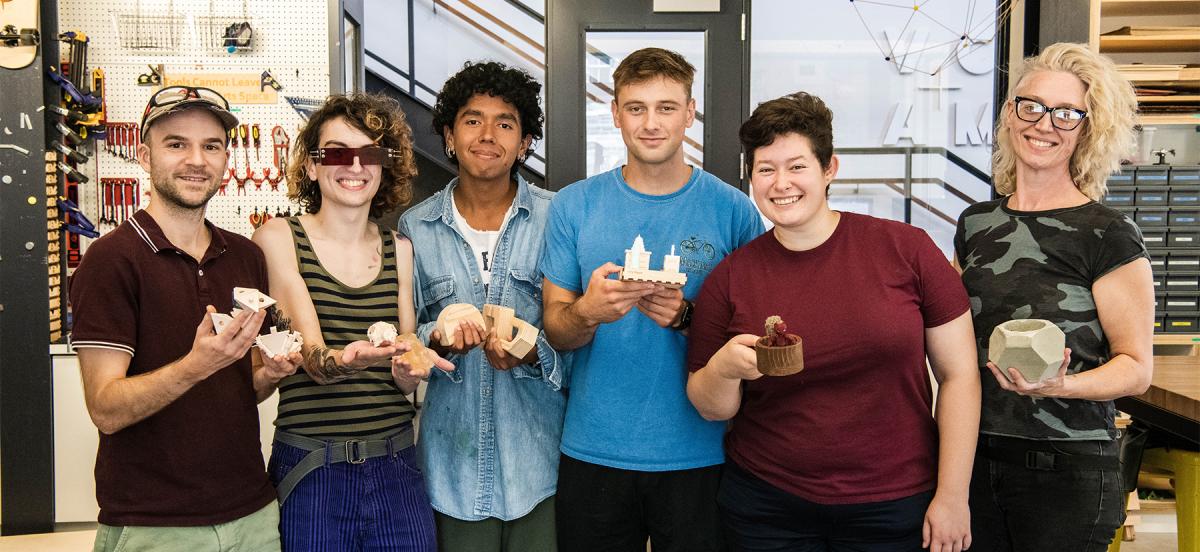
(From left) Kent Watson, Belle Handler-Maben '23, Luca Ponticello ‘24, Dylan Ioffreda ‘24, Ash DiCristofalo ‘23, and Natalie Hutchings all stand in the Maker Space, showing off prototypes created during the Design + Make Fellowship. Photo by Holden Blanco '17.
Details
For the third year of the Design + Make Fellowship, four students learned to design and prototype toys in VCAM’s Maker Arts Space.
Spending the summer playing with toys sounds like a childhood dream come true, but for four Fords it was all in a day’s work. They were a part of the third annual Design + Make Fellowship—a paid, immersive, design, prototyping, and digital fabrication summer program run out of the VCAM Maker Arts Space—which this year focused on toy design. Over eight weeks this summer, the four fellows—Ash DiCristofalo ‘23, Belle Handler-Maben ‘23, Dylan Ioffreda ‘24, and Luca Ponticello ‘24—learned practical design and fabrication using the tools, techniques, and software of the Maker Space.
“I learned a wide variety of skills this summer,” said Ioffreda, a growth and structure of cities major who aims to become an architect. He went on to list “hands-on physical labor, such as casting, molding, prototyping, basic wood shopping, and also the hands-on work of operating Fusion 360—3-D design software—collaborating with peers in relation to design, design decision making, the design process, and more. This will influence my work going forward, as a lot of the design processes and the software that I learned will directly translate to architecture.”
The students were guided by Maker Arts Education and Programs Manager Kent Watson, who designed the fellowship and co-taught it with Natalie Hutchings, the digital arts and sculpture technician. They also received weekly visits from local artists and toy makers, who shared their expertise and taught the novice toymakers how to pitch a toy to a manufacturer.
“Students used 3D-modeling software and the 3D printers,” said Watson. “They learned design techniques, such as design thinking and paper prototyping. They also worked with their hands making wooden toys and silicone molds in the woodshop on campus. Students worked on many different projects—a reverse-engineering assignment, a modular toy, a wooden train whistle, a final project of their choosing—all while learning designing, engineering and making principles.”
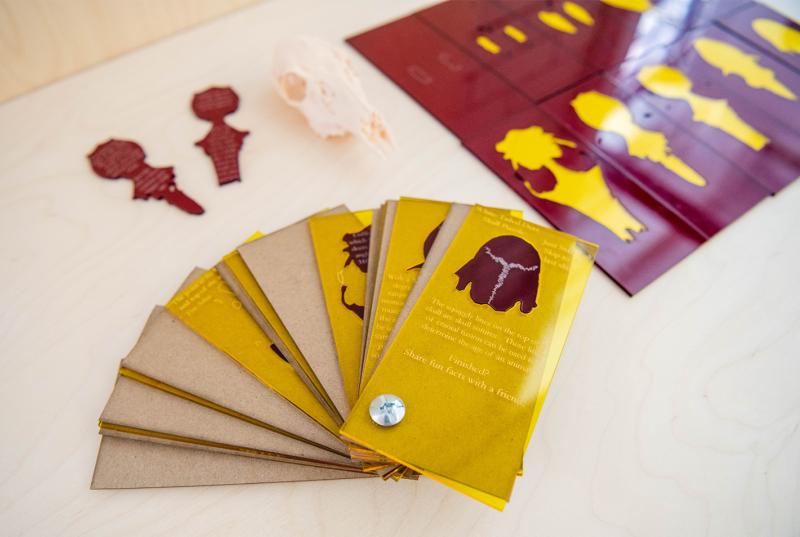
“This fellowship was a great opportunity to begin to think about long-term project management, and days in the Maker Space this summer were spent learning and developing new designs,” said environmental studies major Handler-Maben, “With increasing complexity, we worked to build on past processes to create a final project we could invest in during the latter half of the fellowship.”
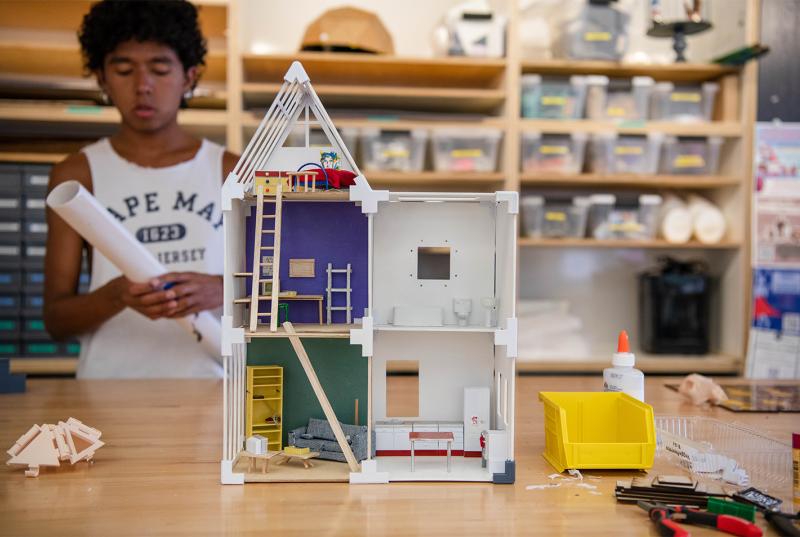
Those final projects included Ponticello’s modular dollhouse, Handler-Maben’s deer head puzzle that invites intuitive play while teaching anatomy, a “mini city maker ” game that Ioffreda designed to allow children to be the architects of their own towns, and a classroom playset for Pennsylvanian forest animal figures that DiCristofalo designed to look like it was inside a tree.
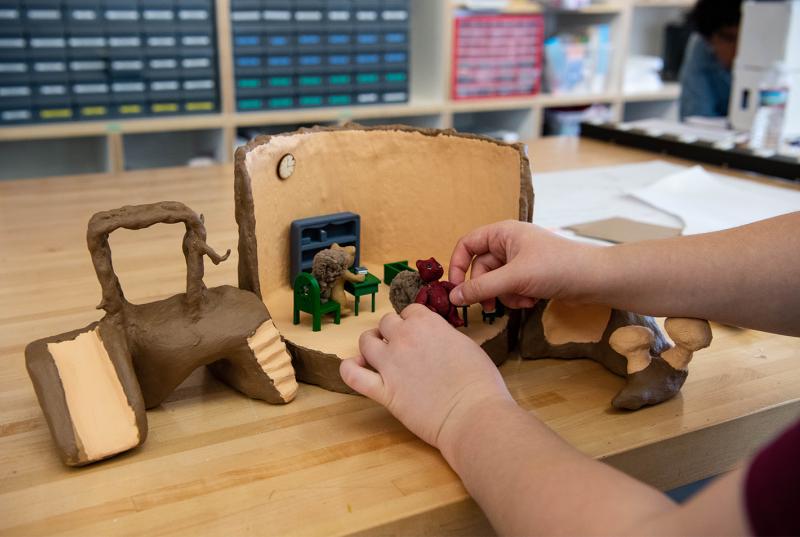
“The inspiration for my toys often came from passions of mine or things from my childhood,” said Ioffreda. “I am hoping to use a lot of my projects and prototypes for a portfolio when I apply to architecture school after college. I also would like to look into taking some next steps on my final project to possibly get it patented.”
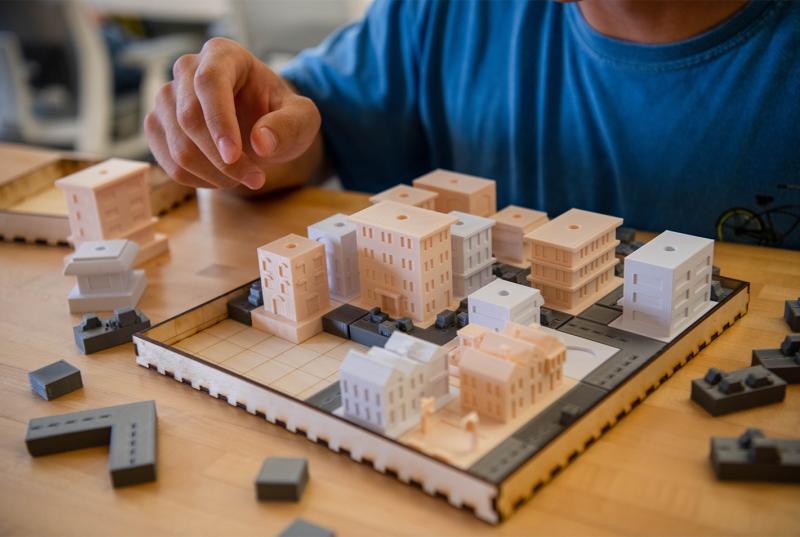
The students had near unlimited creative freedom in inventing their toys. Though Watson gave prompts, such as “make a modular toy,” the design and making processes were guided by each fellow’s imaginative brainstorming and ingenuity, with feedback from the rest of the group.
Most of the student fellows had limited previous interactions with the Maker Space (save Handler-Maben), and none had any previous experience in toy design. But by the end of the summer, all were energized by what they learned and inspired to use their new skills in their next endeavors.
“It was the best way I could have spent the summer,” said fine arts and linguistics double major Ponticello. “I didn’t think I would enjoy toy design as much as I did, and while I still don’t think I’ll become a toy designer, I get the impression that the fellowship will help me with an art career after college. I have a better understanding of how much time and energy goes into making something by hand, and a more practical understanding of the creative process, having seen each toy through planning to fabrication.”
“I really enjoyed this and am honestly sad that it is over,” said Ioffreda. “... Every day I was doing things I enjoyed. I am going to try to hold onto that feeling for as long as I can, so [work] feels as fun, challenging, and engaging as this fellowship was.”



